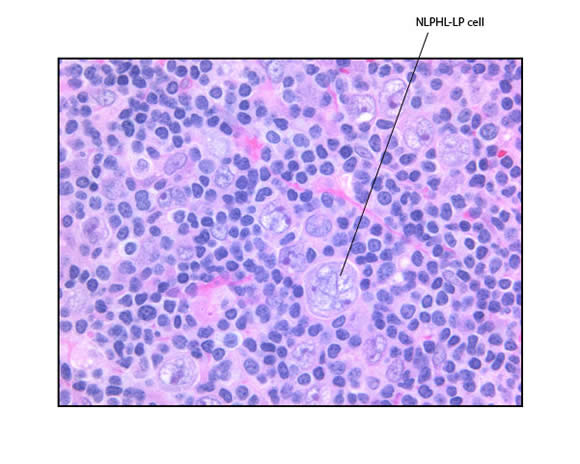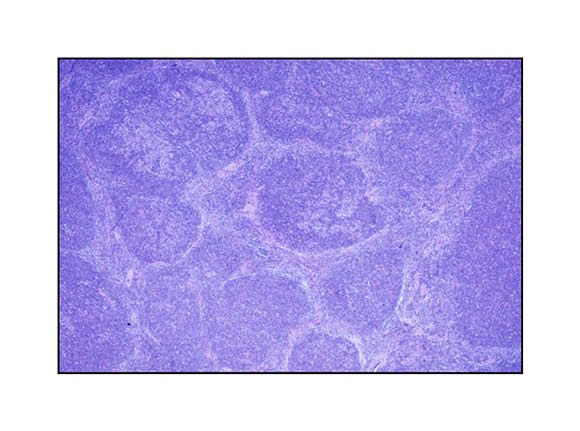Nodular Lymphocyte Predominant Hodgkin Lymphoma
Nodular Lymphocyte Predominant Hodgkin Lymphoma (NLPHL)
Pathology:
- The malignant cells in NLPHL are a distinct entity:
- Differ from classic HL-RS cells and are called Lymphocytic and Histiocytic (L&H) cells.
- Have a characteristic appearance, they are sometimes commonly referred to as “popcorn cells”.
- Also sometimes called NLPHL-LP cells or LP cells.
NLPHL cells have a different phenotype:
- Negative for CD30 and CD15
- Positive for CD20 and CD45
This type of HL can present as a partially nodular or diffuse growth pattern.
Lymphocyte Predominant |
Vesicular, polylobated nuclei Small peripheral nucleoli Often referred to as ‘popcorn’ cell |
Microscopic appearance at high magnification of a LP cell:

Microscopic appearance at low magnification showing partially nodular growth pattern of lymphocyte predominant Hodgkin lymphoma:

Clinical Features
- Relatively uncommon (5% of all cases).
- Much commoner in males.
- Most patients present with localized disease (stage I or II) with no B symptoms.
- Generally involves peripheral lymph nodes and not the mediastinum.
Therapy
The pathology and clinical course is very different from classic Hodgkin lymphoma.
Unlike any other pathologic subtype of Hodgkin Lymphoma, Stage I disease can be treated with surgery alone.
- The COG research study (AHOD03P1) specifically for LPHD is now closed to accrual. On this study:
- Patients were observed only with Stage I LPHD where the disease had been completely resected at the time of diagnosis.
- Chemotherapy (with or without RT) was given only be if the patient relapsed after complete resection.
- Patients with incompletely resected disease received chemotherapy.
- Relapse was treated with 4 cycles of chemotherapy with or without low dose involved field RT (response based therapy).
- In the future it is likely that Rituximab (a monoclonal antibody directed against
CD20), which is always expressed in LPHD will be used therapeutically.
In the long term these patients have an increased risk of iatrogenic complications of therapy including second neoplasms and cardiovascular disease, so it is important not to over treat.
This subtype has an excellent prognosis

